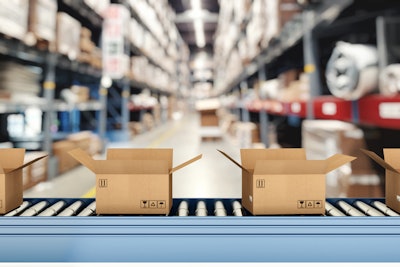
Voxware has released the results of its fifth biennial consumer holiday shopping and shipping survey. The findings indicate that – in addition to increased e-commerce and shipping pressure due to the COVID-19 pandemic – new patterns of behavior from holiday shoppers will severely strain distribution center operations and their ability to meet expectations for accurate and on-time fulfillment.
Key survey findings include:
- Shipping directly to gift recipients means more packages sent per order: 77 percent of respondents plan to have more gifts shipped directly to recipients than last year
- More smaller items must be picked and packaged this year: 78 percent of respondents plan to purchase ‘stocking stuffers’ online rather than purchasing them in-store
- COVID-related supply chain slow-downs have been prevalent: 13 percent of respondents claim up to 50 percent of the items they have purchased online have arrived later than the promised delivery date
- Consumers are abandoning retailers with late delivery: 30 percent of consumers are much less likely to purchase from an online retailer who has failed to deliver an item on-time in the past, up from 23 percent in 2018
Distribution Volume Surges
With COVID-19 concerns remaining front-of-mind for consumers, e-commerce will unsurprisingly play a critical role in holiday shopping. According to Deloitte’s Annual Holiday Retail Forecast, e-commerce sales will grow by 25 percent to 35 percent, year-over-year during the holiday season, compared to 14.7 percent in 2019.
With distribution operations already strained due to pandemic-driven eCommerce demand, shipping networks will face not only increased demand but the heightened expectations inherent with holiday shipping. Indications point to substantial volume increases over previous holiday seasons, with Voxware reporting that 61 percent of consumers will be shipping more gifts to their homes this year.
More consumers are also planning to ship gifts directly to recipients, a trend likely linked to social distancing recommendations and reduced or eliminated travel plans. Volume issues will be compounded as distribution centers unaccustomed to shipping multiple items within a single order to numerous addresses will be tested.
When asked about smaller items like stocking stuffers, 78 percent of consumers anticipated buying these gifts online (up from 62 percent when surveyed just this summer). Traditionally “impulse buys,” these items are generally bought in-store. The trend is indicative of consumer anticipation of reducing time physically browsing in brick-and-mortar locations. Adding yet another new challenge to the list of distribution center concerns, these smaller items are notoriously more difficult and time consuming to pick and have not represented a significant portion of holiday shipping in years past.
These COVID-driven behaviors require rethinking how to optimize item selection, order sorting, label printing, packing order confirmation forms and boxing – not to mention how to handle gift messaging and wrapping services.
Expectations are Rising
“In 2020, Christmas bells will sound more like alarm bells at many distribution centers,” said Keith Phillips, President and CEO of Voxware. “One thing remains constant, even during this challenging time consumer expectations continue to rise. Distribution centers need to perform in accordance with those expectations or suffer consequences to brand reputation and ultimately revenue.”
30 percent of customers surveyed report that they are less likely to buy again from an online retailer who has failed to deliver an item to them on time in the past (up from 24 percent in 2018 and only 15 percent in 2016). An even more timely concern, 47 percent of consumers strongly agree that their expectations for correct and on-time delivery are higher during the holiday season (up from 39 percent in 2018).
What’s more, when disappointed by delivery delays, consequences are increasing. Potentially linked to growing familiarity and comfort with returning items, 26 percent of respondents report returning items that arrive late (up from only 10 percent in 2018). 43 percent of consumers surveyed in 2020 report being very likely to share their negative experiences online (up from 33 percent in 2018 and 23 percent in 2016).
To protect their brand, retailers must automate distribution center processes to accelerate operations while reducing mistakes.
COVID Crisis Spurs Distribution Center Automation
“Retailers have been scrambling to identify and deploy warehouse technology given the challenges many faced earlier this year,” said Phillips. “Automation will be critical and companies that have not taken the initiative to optimize their distribution centers will struggle to deliver the flawless experience customers expect. When consumers can switch retailers with the swipe of a finger, speed and accuracy of delivery is a critical differentiator.”
Mistakes in distribution operations remain common. In 2020, respondents reported more delayed and more inaccurate deliveries than in years past. The result is a negative lasting impact on customer loyalty, reputation and ultimately the bottom line. Distribution operations continue to play a substantial role in protecting these metrics. According to the survey, 61 percent of respondents report they will abandon shopping with a retailer if they receive two or three late deliveries.
Retailers rely on Voxware VMS to improve speed, accuracy and efficiency in the distribution center. Using Voxware VMS, customers realize immediate improvements in accuracy, double-digit productivity gains, reduced labor/operating expenses and gain complete visibility into distribution operations. Voxware enables its customers to choose the right solution for each job, whether that be voice, scanning or vision through augmented reality.













